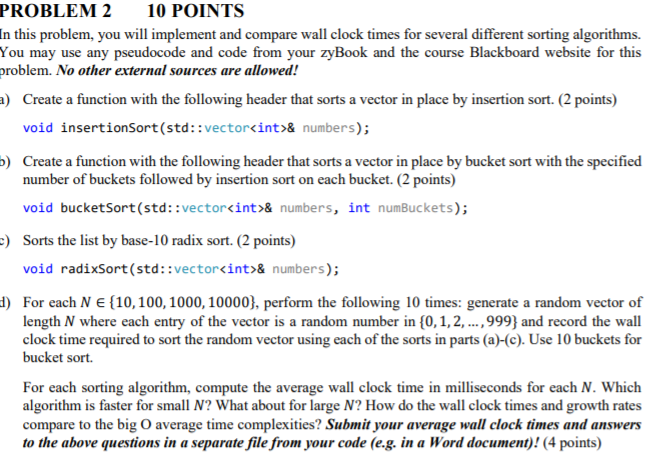Answered step by step
Verified Expert Solution
Question
1 Approved Answer
You may assume that all entries of the vector are non-negative integers! PROBLEM 2 10 POINTS In this problem, you will implement and compare wall

You may assume that all entries of the vector are non-negative integers!
PROBLEM 2 10 POINTS In this problem, you will implement and compare wall clock times for several different sorting algorithms. You may use any pseudocode and code from your zyBook and the course Blackboard website for this problem. No other external sources are allowed! a) Create a function with the following header that sorts a vector in place by insertion sort. (2 points) void insertionSort(std::vectorStep by Step Solution
There are 3 Steps involved in it
Step: 1

Get Instant Access to Expert-Tailored Solutions
See step-by-step solutions with expert insights and AI powered tools for academic success
Step: 2

Step: 3

Ace Your Homework with AI
Get the answers you need in no time with our AI-driven, step-by-step assistance
Get Started


